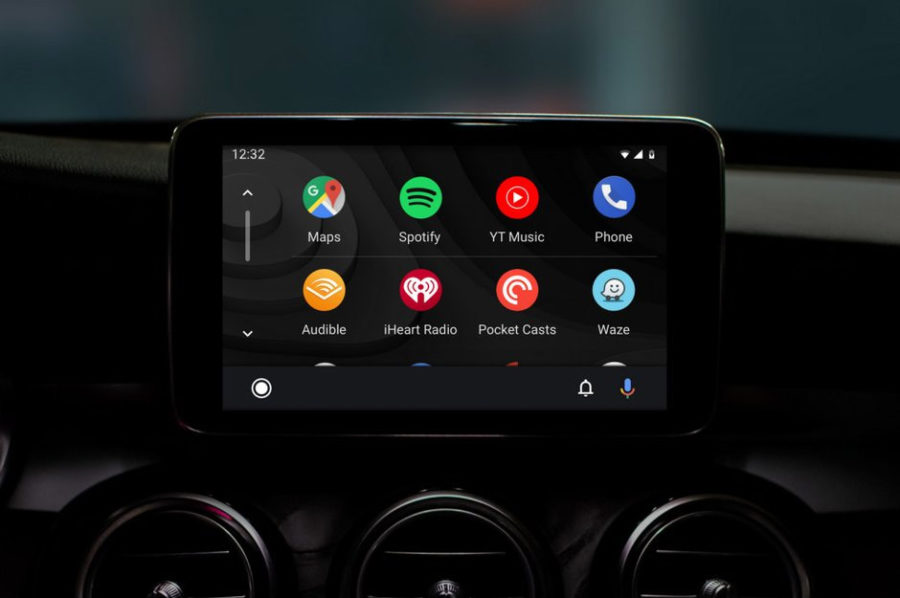Based on materials from android-softwares.com

Dark Mode needs no introduction. Anyone who has ever tried to read something from their phone screen, waking up in the middle of the night, will agree with this. Dark Mode not only saves your eyes when using your smartphone in environments where the ambient light is not bright enough. This is a real lifesaver for OLED – screens that use much less power when displaying dark colors.
Back in January, we learned that the development of an optional dark interface was approved for the Google programming team, and now dark mode will officially be included in the number of functions Android 10 Q.
No wonder, because this is one of the most desirable options for users Android, the appearance of which has been vigorously demanded from time immemorial. It got to the point where major smartphone manufacturers such as Samsung and Huawei began to include it in their own shells in response to user requests.
Native apps Android with dark mode
Google just rolled out the ability to switch to dark mode in its Keep app, but before that, many native apps Android took on various shades of gray, and the apogee was the introduction of the system dark theme in Android Q, which may optionally extend to third-party applications.
The aforementioned Keep app has now joined a host of other Google apps such as Drive, desktop Chrome, Phone, Contacts, Messages, Google News, Play Games, YouTube and even Android Auto, as you can see in the header image. Now it has become too long to list them, since all stock applications in the coming months to the release Android Q should receive this mode.
Dark mode in Android
Dark Mode is coming to Q – but what about material design?
In previous beta versions Android Q there was no option to enable dark mode in the settings, you had to enable power saving mode in Android Q and set the threshold value higher than your current one. Also, everything looked quite inconsistent – the dark mode, for example, was in Photos, Files and Contacts, and not, for example, in Messages or Calendar. However, in the public beta Android Q, the dark theme could already be manually activated and automatically enabled as a power saving option.
Is this all in line with Google's material design principles that the company encourages phone manufacturers to follow when creating skins for Android? Well, now we can look at detailed instructions on how to make your app or launcher interface pleasing to the dark side of the Force. For example, the development team advises against using saturated colors that will contrast with a dark background, or suggest using grayscale instead of black, unless it is a priority for you to conserve battery power on devices with OLED – displays.
For example, here are some guidelines for the dark theme:
- Dark themes that follow material design principles have the following properties:
- Contrast: Dark areas and 100% white body text have a contrast ratio of at least 15.8: 1.
- Depth: The components with the highest height represent depth by lighter background colors.
Desaturate: Primary colors are less saturated to meet the AA level of the Web Content Accessibility Guidelines (WCAG) at least 4.5: 1 [contrast level] (when used with body text) at all height levels . - Color limitation: For large surfaces, use a dark background color with a limited number of accent colors (lighter less saturated colors and brighter more saturated colors).
-

Dimming with gray. Use dark gray rather than black to convey height and space in environments with a wide range of depths
-

Color with accents. Apply a limited amount of color accents in dark-theme interfaces, so that dark surfaces take up the majority
How to darken Instagram or WhatsApp?
Dark Mode was not ready in the first beta Android Q, and shell manufacturers were forced to create variations to the best of their own understanding, but now Google was able not only to apply it to itself Android, but Extend your design principles to the work of third-party developers. When the application developer adds the line 'android: forceDarkAllowed =' true ', Android switches the application to dark mode automatically, without having to do it himself, and the developer still has the opportunity to partially disable dark theme elements if he does not I like the specific view of the window.
There are three ways for users to enable dark mode in Android Q. There is a new system setting (Settings> Display> Theme) that allows you to enable dark mode. You can also use the new Quick Settings toggle in the notification bar to quickly turn this mode on and off when it's already activated in settings. On Pixel devices in power saving mode, you can also turn on the dark theme, as in the early beta versions, but this is left to the discretion of other manufacturers Android – devices – whether they support this option in their skins. Most of them, however, already support it.
It wasn't enough for Google to just offer a dark mode for its launcher and default apps, or let developers use the universal option automatically. You can apply it yourself in third-party applications if you want, even in those whose developers have not thought about it yet.
This feature has been tested in several popular applications and worked quite well most of the time. If you want to see how it will look, for example, in Instagram or WhatsApp, you will need to go to Android Q in Settings> System> Developer options, find the switch 'Override force- dark ', turn it on and watch the magic happen. What do you think?








